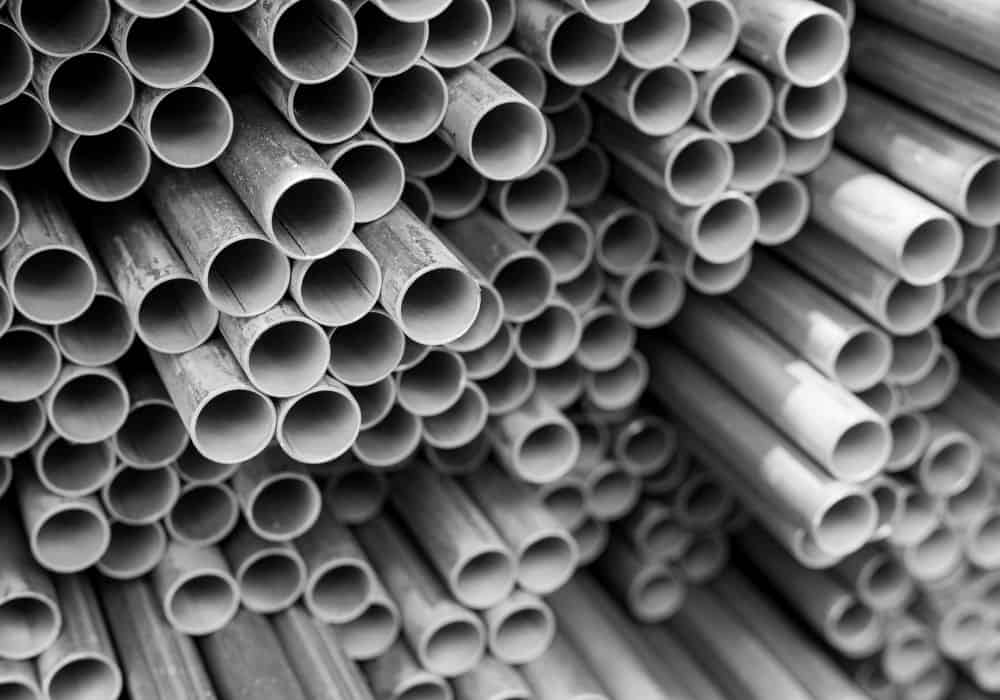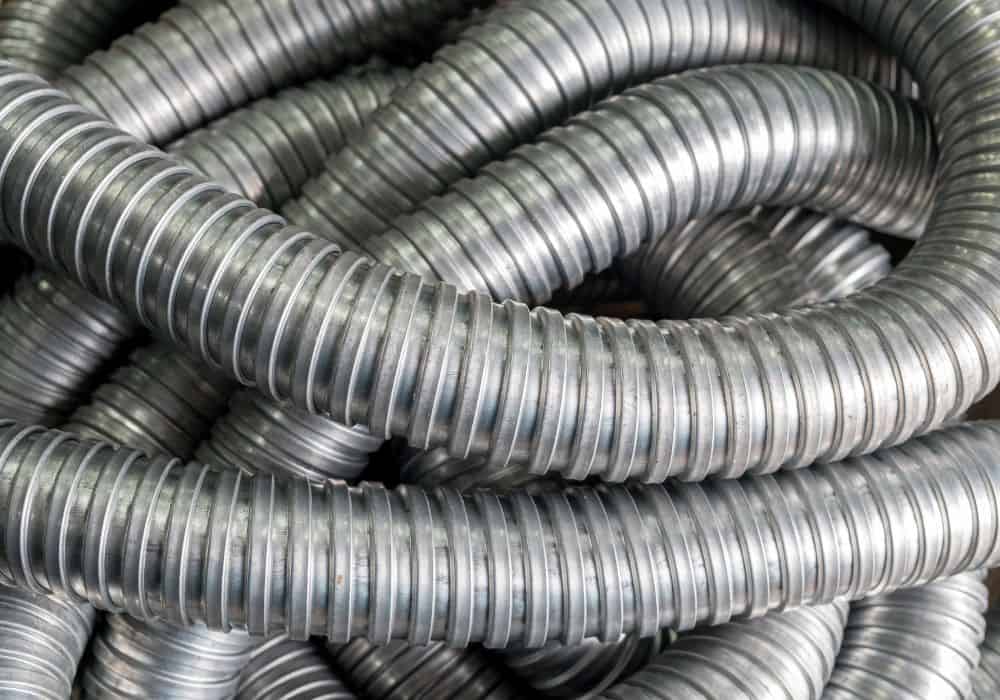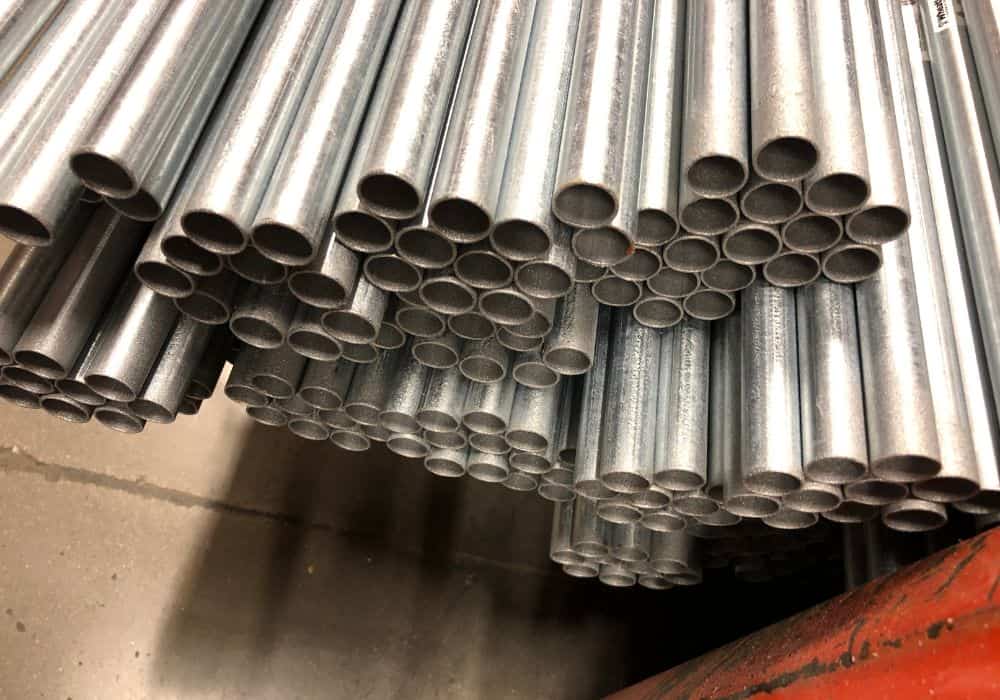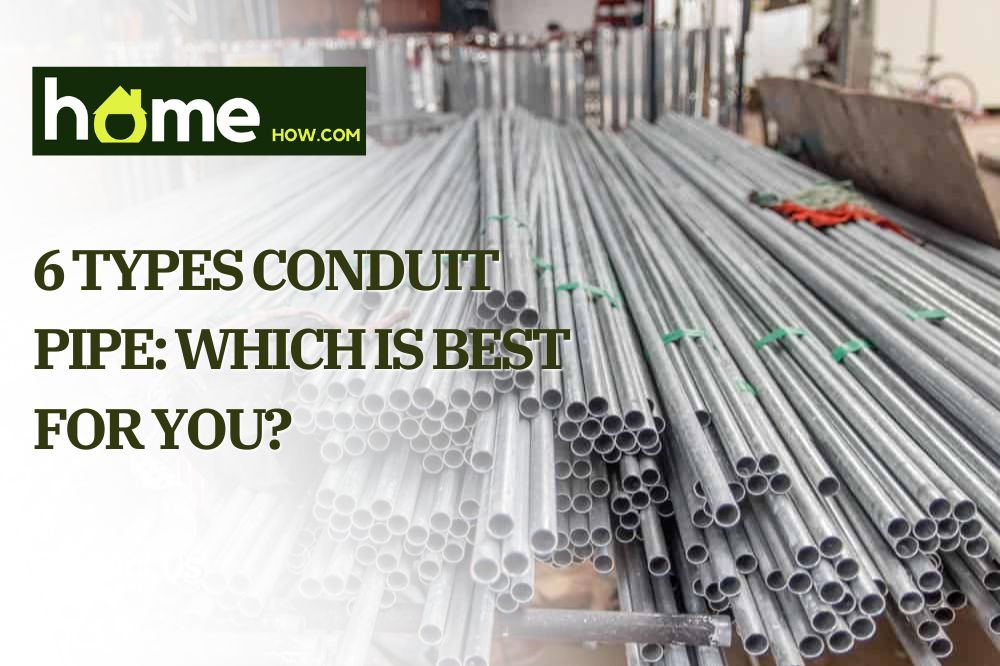Are you in need of electrical wiring or want to familiarize yourself with electrical conduits, their function, and their purpose? If you answered yes, you have come to the right place.
A conduit pipe is a type of channel/tube used to protect and route electrical wirings in buildings or other environments. Why? Wires are very fragile, and they can pose a safety risk after being damaged.
It is well-known that exposed wires and bad or outdated wiring can cause a fire, which is why you should never spare money on your wiring. There are different types of conduit pipes and various kinds of electrical conduits.
So, let’s see what a conduit pipe is, what types of electrical conduits exist, and other interesting facts.
What is an Electrical Conduit?

As mentioned, conduit pipe, also entitled electrical conduit, is a type of durable tube: its primary goal is to prevent any potential damage to the wire in areas where it might be subject to damage. Therefore, it is mainly used in attics, crawlspaces, and basements.
When you look at a conduit pipe, it might remind you of an armored cable, inside which are enclosed individual wires used for the AC system.
Besides the electrical conduit, several other components are used in the cable management systems, such as wiring ducts, wire ways, and cable carriers. Conduit pipes are usually made of metal, fiber, plastic, or fired clay and can be rigid or flexible.
Suppose you need to install electrical conduits or some duct system. In that case, we suggest you refer to the US National Electrical Code or local building codes, a set of standards for the safe installation, design, and inspection of electric wiring.
Types of Electrical Conduits
The conduits are generally identified or classified by the type of material used for the tubing and wall thickness. The material is selected based on the purpose of the conduits, and they generally offer automatic protection and corrosion resistance.
1. Electrical Metallic Tubing (EMT)
Electrical Metallic Tubing (EMT) is rigid or unbending tubing with walls made of galvanized steel or aluminum and installed with threaded fittings and couplings. Those are protected by compression-type fasteners or setscrew.
The treated fittings are affordable and easy to find, so you do not have to worry about that. Even though they are on the list, they are actually classified as tubes and not conduits.
EMT’s walls also called ‘thin walls,’ are thinner and lighter than Rigid Metal Conduit (RMC), and that is one of the reasons they are used in environments or areas where they cannot encounter stresses.
Although they are pretty firm, they can be bent with a tube bender. EMT is generally used for exposed indoor wiring, often in residential or light commercial buildings. Therefore, EMTs should be assembled with special water-tight fittings.
You can purchase EMTs with a rust-resistant coating, which can be used in indoor and outdoor applications.
2. Flexible Metallic Conduit (FMC)

A flexible metal conduit is called ‘Greenfield’ after the inventor Edward Greenfield, who created the metallic conduit patent. It is made from coiled self-locked aluminum or steel straps, forming a hollow tube through which wires can be pulled.
The premium aluminum alloy provides strength and durability, while the interlocking design with metal strips offers integrity and flexibility.
Unlike EMTs, FMC is very flexible and bendable, and that is why it is often used for the last few feet of the wiring- you can bend it in an environment where conventional conduit cannot be maneuvered.
Due to its spiral construction, it is also used for walls and many other buildings. Besides the flexibility, FMC offers other advantages, such as absorbing vibrations and allowing movement.
This is why you will see FMC in-house wiring for pumps, motors, and manufacturing equipment. FMC is also easy to change, replace, and upgrade, which is not the case with other tubes.
The major disadvantage of FMC is that it is not corrosion-resistant and does not protect the wires against impact. Therefore, it is mainly used indoors, then outdoors because you cannot bury it or embed it into concrete, for example.
3. Liquid-Tight Flexible Metal Conduit (LFMC)
Liquid-tight flexible metal conduit, also known as ‘seal tight,’ is a flexible metallic conduit, meaning it is made the same way as FMCs. However, the significant difference is that it has a plastic or non-metallic outer covering.
They are waterproof and offer resistance to cracks, and sunlight exposure, meaning you can use them outdoors and in wet conditions, unlike FMCs. However, if they are used in a moisture-prone environment, water mustn’t enter from the joint and end connectors.
LFMCs are often used with outdoor equipment such as air conditioners (AC). Even though LFMC is excellent for areas exposed to liquids, moisture, and vapors, they are susceptible to physical damage. Therefore it should not be exposed to stresses or encased in concrete.
4. Rigid PVC Conduit (RPC)
Rigid polyvinyl chloride is one of the most common types of wiring found in commercial and industrial buildings. It is very similar to PVC plumbing pipes and is used in areas that might be exposed to liquid or moisture.
Like PVC plumbing pipes, RPC is waterproof and installed with plastic fittings glued in place. The main difference is that RPC offers good resistance to acidic chemicals.
Given that this type of conduit is made of PVC, it can be buried directly in the ground and offers resistance to rust and corrosion.
5. Rigid Metal Conduit (RMC)

Rigid metal conduit is also very commonly found in commercial buildings. It is generally made of heavy-duty, galvanized, stainless steel or aluminum and installed with threaded fitting.
Also known as a rigid aluminum conduit, RMC has very thick and tough walls, which protect the wires against various impacts and punctures. On the other hand, this means that they are heavy, unbendable, and expensive.
Most likely, you will have to use compression fittings to cut them, but as usual, we suggest you call a professional if you have yet to gain experience. If your RMC is made of aluminum, it will offer excellent protection against water, moisture, and corrosion.
On the other hand, they do not respond well to concrete because aluminum reacts to it. However, today you can purchase RMC threaded with a special coating to be embedded in concrete.
The RMCs made of galvanized steel (GRC) are often used indoors or outdoors and are suitable for different environments and conditions; for example, they can be used as an equipment grounding conductor.
In addition, they are used to provide support for electrical cables and panels.
Besides the mentioned RMC, there is a thinner and lighter version called intermediate metal conduit or IMC. Its purpose and use are the same as RMC; the only difference is that LMC is more frequently used in newer construction because it is lightweight.
6. Electrical Nonmetallic Tubing (ENT)
Electrical non-metallic tubing is a flexible corrugated tube made of plastic and installed with glued snap-lock or plastic fittings.
It offers resistance to water and moisture and is also flame-retardant, which means that it can prevent or slow down the further development of ignition. These tubings are used indoors, mostly inside walls, and cannot be exposed to outside conditions.
They are very bendable and can be used installed inside concrete blocks. On the other hand, they should not be directly buried.
How to choose the right electrical wiring for your house?
There are several things to consider when buying conduits. The first one is to see how complicated the installation process is or what is the function of the trunking.
Then, you inspect its features and compatibility with different environments, whether fire or water-resistant. Finally, depending on where you will install the conduits, you need to know whether you want bendable or rigid pipes.
The material also plays a vital role because, as you can guess, not every material is suitable for every environment. Also, the type and quality of the material can tell you whether it is durable and how long it will last.
If it is wiring that will not be changed for a more extended period, we suggest you buy high-quality conduits.
Conclusion
As you could have guessed, regardless of the type of electrical conduits, they have an essential purpose and are vital for protecting the wiring of homes in either private or commercial establishments.
They protect the wires against different factors, such as moisture, heat, sunlight, impact, and cracks.
They can be made of different materials, depending on where they will be used- different environments have different climates, meaning it calls for a specific type of material.
What is your experience with electrical conduits? Which are the best, in your opinion? Please, share your experience with us! If you have any questions, do not be shy and ask away.
